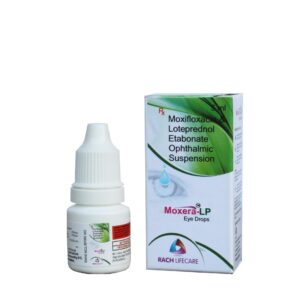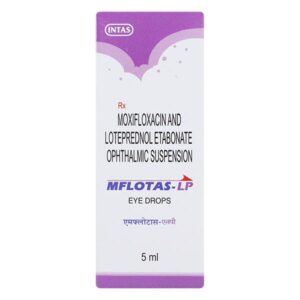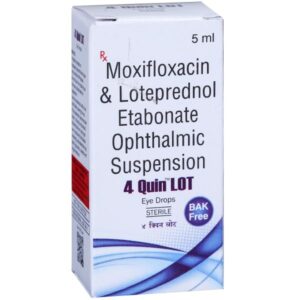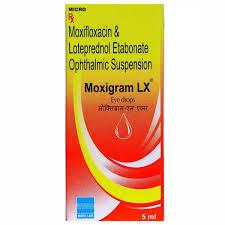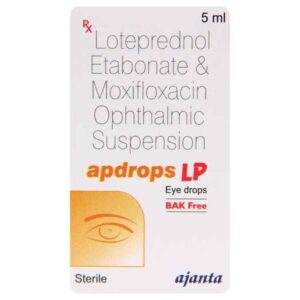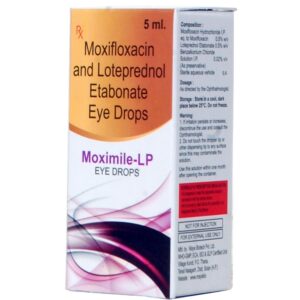LOTEPREDNOL + MOXIFLOXACIN
Loteprednol: Loteprednol is a medication primarily used to treat certain eye conditions, such as inflammation and swelling following eye surgery or eye disorders like allergic conjunctivitis. It belongs to the class of drugs known as corticosteroids. Loteprednol is available in the form of eye drops.
The exact mechanism of action of Loteprednol is not fully understood. However, it is believed to work by suppressing the release of substances that cause inflammation in the eyes. It also helps in reducing redness, swelling, and itching.
The usual recommended dose of Loteprednol eye drops is one to two drops into the affected eye(s) four times a day. The treatment duration may vary depending on the condition being treated and the severity of the symptoms. It is important to follow the instructions provided by your doctor or those mentioned on the prescription label.
As with any medication, Loteprednol can cause certain side effects. Common side effects include temporary stinging or burning sensation upon instillation, blurred vision, mild eye discomfort, dry eyes, and watery eyes. These side effects are usually mild and temporary. However, if they persist or worsen, it is advisable to consult your healthcare professional.
Some less common but more serious side effects may include eye pain, increased intraocular pressure (leading to glaucoma), vision changes, eye discharge, eye swelling, or signs of an allergic reaction (rash, itching, swelling, severe dizziness). If you experience any of these side effects, seek immediate medical attention.
It is important to inform your healthcare provider about any other medications you are taking as they may interact with Loteprednol. Loteprednol is a prescription medication, so it should only be used under the guidance and supervision of a healthcare professional.
Moxifloxacin: Moxifloxacin is an antibiotic drug that belongs to the class of fluoroquinolones. It is used to treat various bacterial infections, including respiratory tract infections, sinusitis, pneumonia, skin and soft tissue infections, and sexually transmitted diseases such as gonorrhea.
The mechanism of action of moxifloxacin involves inhibiting the activity of bacterial enzymes called topoisomerases, specifically DNA gyrase and topoisomerase IV. These enzymes are responsible for the replication, transcription, and repair of DNA in bacteria. By inhibiting these enzymes, moxifloxacin disrupts the bacterial DNA replication process, leading to the death of the bacteria.
The dosage of moxifloxacin varies depending on the specific infection being treated. It is usually taken orally in the form of tablets or as an intravenous infusion. The prescribed dosage and duration of treatment should be followed strictly as recommended by the healthcare provider.
Common side effects of moxifloxacin may include nausea, vomiting, diarrhea, abdominal pain, headache, dizziness, insomnia, and skin reactions such as rash or itching. Rare but serious side effects may include tendonitis or tendon rupture, liver damage, allergic reactions, and changes in heart rhythm. It is important to inform the healthcare provider immediately if any severe side effects occur.
It is worth noting that moxifloxacin is not recommended for use in pregnant women, breastfeeding mothers, children, or individuals with a history of tendon disorders or hypersensitivity to fluoroquinolones. Additionally, it may interact with certain medications, so it is important to inform the healthcare provider about all current medications and medical conditions before starting moxifloxacin treatment.


